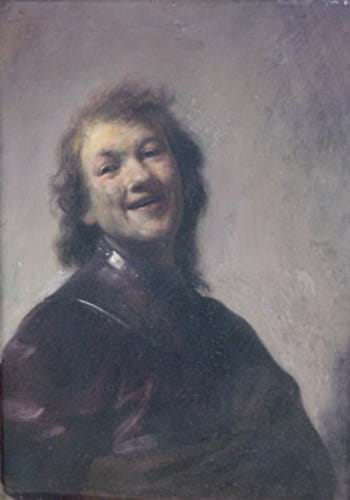
Ernst van de Wetering, founder and head of the Rembrandt Research Project, said that the painting was an original Rembrandt after carefully examining the diminutive 9 1/2 x 6 1/4in (24 x 17cm) oil on copper in a range of technical and stylistic studies.
In a 23-page report published this month, he stated that it is with "a probability bordering on certainty" an authentic early work dating from around 1628.
The work surfaced at the Cirencester rooms of Moore Allen & Innocent (15% buyer's premium), consigned by an English family who had owned it for many years. Nothing is known of its whereabouts prior to 1800.
Although images had been emailed to the Rijksmuseum before the sale, "their response was pretty dismissive," said auctioneer Philip Allwood at the time. The work had also been rejected by one of the main London salerooms on two separate occasions.
This was mainly due to the level of overpaint on the portrait and the fact that only three other works on copper are known to have been painted by Rembrandt.
The auctioneers attributed it in their catalogue to "a follower of Rembrandt" and gave it an estimate of £1000-1500.
However, at the sale, two interested parties were prepared to back their hunch that it might be original by bidding over £2m, taking it to the highest price ever seen for a picture sold in this country outside London.
The buyer was anonymous but thought to be from the London trade.
Since the sale, the painting has been subjected to an exhaustive examination carried out by the Rembrandt Research Project in association with a British laboratory.
Mr van de Wetering's authentication of the portrait was based on its brush strokes, contours, materials and the monogram which all pointed to the master's hand.
Firstly, the portrait had a number of striking similarities with another of Rembrandt's early self portraits painted around 1629 in Nuremberg.
Although Mr van de Wetering felt that the folds of the clothing made the body shape seem rather amorphous, he stated that the contours were the same as those seen in a number of Rembrandt's later works.
He believed that this may have been one of the first times that Rembrandt tested out this way of painting the body.
Secondly, the thin copper plate was of the same size and type used in other Rembrandt paintings. Also, an X-ray analysis revealed a second painting underneath which was consistent in content and composition with other Rembrandt works of the same period.
Perhaps the clinching factor, however, was the RHL monogram which was painted in a rare style that the artist only used for about a year. It stands for Rembrandt Harmenszoon of Leiden and was painted onto the wet paint of the background. The direction of the brush strokes matched another monogram known to be Rembrandt's.
Having now been officially authenticated, the portrait is being exhibited at The Rembrandt House Museum in Amsterdam until June 29. They have decided to name the work Rembrandt Laughing.
As to what it might be worth, although figures up to £20m have been bandied about in the media, one informed trade source suggested to ATG that around £5m would be a more realistic level.
Mr van de Wetering's assessment of the work can be downloaded freely at www.rembrandtresearchproject.org
By Alex Capon




